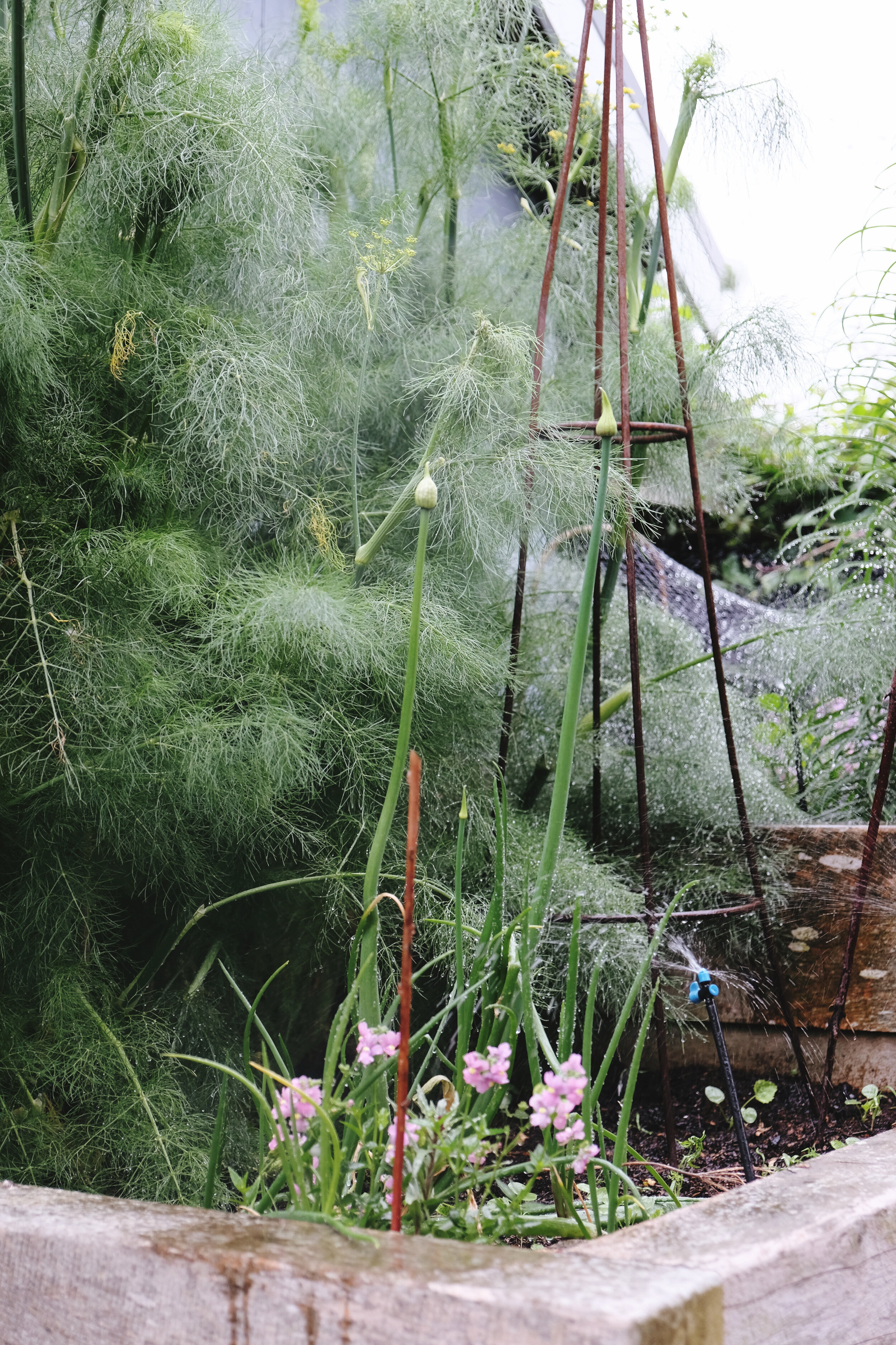A beginners guide to watering
/It wasn’t until I entered my first summer with a garden that I realised I had no idea how to effectively or sustainably water it. As a rule, I was a serious under waterer of my own body, so mastering the needs of my growing green required some upskilling. Once again I turned to the best resource of any new gardener; the older gardener, discovering that keeping my garden happy wasn’t as I first thought.
With drought always knocking on the door of New Zealand regions, even outside of the summer months, it seems like a great time to share some baseline watering tips for my fellow beginners. However, as restrictions come into place in your region, tap into council issued guidelines that come with those as no doubt you will learn even more.
Firstly, dial into your garden, no matter if it is a small town of pots or garden beds. Notice the plump strength of your plants after a good rain, they practically glow with wellbeing (rainwater actually contains nitrate, necessary for the development of lush foliage). Then have a wander after a scorcher and see the distinct wilt and flop to their leaves. This is what a thirsty plant looks like vs a hydrated one, an obvious message that water is required. Another immediate test is to sink your finger into the soil to the second knuckle. If you feel moisture beyond the top layer, all is well for now. If dry at your finger tips, its time to top up.
Now the BIG clincher. When should you deliver this water and how?
By all accounts first thing in the morning is the best, giving important hydration to the plants to cope with heat but time enough for their leaves to be dry before they go to bed. Soggy foliage in the cool of the evening can encourage disease like mildew. However, for gardening to be enjoyable it also needs to fit into your own schedule, so an easy rule of thumb is to water after 6 pm and before 10 am. Watering during the heat of the day, under direct sunlight risks wastage through evaporation and droplets of water on leaves can also magnify sunlight and scorch your plant.
While it feels like the right thing to do, quick daily top ups of water does more harm than good in the long run. Pots and newly planted out seedlings are the exception here, with their greater potential for evaporation and baby root systems so close to the surface. Daily watering in the height of summer is sometimes needed for them, or at least every second day. In contrast, for garden beds, aim for deep soaks 1-2 times a week depending on the heat and natural rainfall you get. This is where garden watering systems come into their own, as you want to water a bed of plants for 45 - 60 mins at a time. Essentially, less frequency of watering but for longer periods. Deeply watering your beds and letting them dry between times will encourage your plants to develop deeper root systems, vital to their resilience of dry spells and challenging water restrictions that might come. It’s a great idea to get helping them along now!
While water restrictions will often dictate “how” you are able to deliver your water, with bans on hoses and sprinklers at different levels, installing and reviewing your systems are a good idea.
Garden specific irrigation systems are very easy to come by and install, with starter kits available at all hardware stores. Trust me when I say, if you don’t have one in your garden, certainly go chat to one of those helpful employees in the garden aisle and see what you can come up with within your budget. Having a system makes watering a breeze! You can also pick up timers which will allow you to plan your watering, even if you are away. There are many options that include above ground sprayers or in-ground drippers. If you already have above ground, do a quick review with them turned on, making sure all are directed properly into your garden beds, not wasting your precious water by soaking the driveway instead. In-ground drippers are a fantastic option as they drastically reduce the amount of water that evaporates into thin air and there are many plants that frown at having their blooms and foliage hosed down constantly.
If you are a hand waterer, using your hose, make sure you have a good spray head on it that allows you to easily control how much water you are using and where you are directing it. When watering pots, my usual routine is to water each until I see water coming out the bottom. This may be much longer than you previously thought. When hand watering the garden, you are looking to soak about the top 30 cm of soil in your beds. To help you understand how much time this might take, use a bamboo chopstick to plunge into the sprayed soil. If wet soil has stuck to it, this is a good sign the water is heading downward toward the roots. Not so different to testing if a cake is cooked!
This can feel surprisingly time consuming if you have previously flashed your sprayer around to just visually dampen the surface, but its important for the resilience of your garden to get a good soaking. And walking your garden with hose or watering can is a relaxing activity in itself.
To top off this calculated watering, you want to give your soil the best chance of retaining it. This is when “mulching” comes into play. Using organic options like pea straw, leaves, grass clippings and bark work well, but also are best for specific plantings, so do a little research first. These have a double edged benefit of decomposing and adding nutrients to your bed over time. Your aim with any of them, is to create a barrier between your living earth and the brutality of the sun, reducing evaporation, levelling out soil temperature and limiting the washing away of nutrients.
Other jobs and avenues to explore are staying on top of your weeding (you want your plants to benefit from this water!) and investigating installing your own rain water storage tanks. Understanding that your singed brown lawn, unable to be sprinklered, will come back with rainfall and that trees and shrubs are mostly more resilient than your softer perennials and annual veges and plants. That, there are a whole variety of plants that originate from dry landscapes around the world that might pose new options for your outside areas in the future. And that a quick google will pull up an abundance of suggestions on how you can save your daily grey water to apply to your garden!
Good luck!
The original version of this article appeared in my Stuff Homed column online , on The Dominion Post and The Press on 5th Nov. 2020





